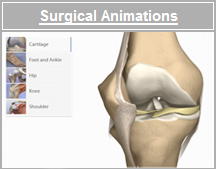
|
UNICOMPARTMENTAL KNEE REPLACEMENT Osteoarthritis is a process where the knee joint padding wears down due to a number of reasons. This can be due to combination of genetics, previous history of injuries or trauma, obesity, or a combination of all of the above. In unicompartmental arthritis, the padding between the inner or outer portion of the knee joint is worn down. Meniscus is the pad or gasket between the two bones and articular cartilage is the covering over the end of the bone that provides for smooth gliding function of the knee. When this is worn down, the knee will start to bow either inward (not made) or outward (bow legged), which indicates that one side of the knee is worn more than the other. This will produce pain and difficulty walking and going up and down stairs. When a wear in the joint involves only one portion of the knee, then there is an opportunity for treating this with a partial knee replacement (unicompartmental knee replacement or “uni”). Rather than replacing the entire joint as a total knee does with resurfacing the end of bone with a metal prosthesis and resurfacing the tibia or shin bone with a metal and plastic implant, we are able to just resurface the portion of the joint that is abnormal. This allows for less bleeding, slightly smaller incision, improved range of motion, and in general better function with day-to-day activities such as walking and climbing stairs. There are a number of different manufacturers of unicompartmental knee replacements and they all have their advantages and disadvantages. The operation is indicated when your day-to-day function is reduced to the extent of walking, climbing stairs, and getting in and out of a chair are limited. This procedure is not for someone who wants to be more active, i.e. is now bicycling, but wants to run and wants to play active tennis. Because uni is a prosthesis, it is generally cemented into the joint and over time will loosen and wear. The vast majority of unis are still in the knee and functioning at 15 years, but ill-advised activities will cause the prosthesis to fail sooner. This will then require changing this out to a total knee replacement. The operation involves either a general or spinal anesthetic. Hospitalization is for two or three days. After surgery, a machine that will help improve her range of motion is generally used called a CPM (continuous passive motion machine). This helps get the range of motion back and is used for 4-6 hours a day on the average. Medical conditions such as diabetes, vascular disease, and history of smoking cannot achieve recovery and delay wound healing and it is strongly advised that having the medical problems “tuned up” to the best of the patient’s ability is important. In general, no blood products are needed after the operation, so donating your own blood is not necessary for unicompartmental knee replacement. However, if it is not certain whether a uni or total knee will be necessary, then blood is donated preoperatively and you can receive your own blood postoperatively if needed. Progress rehabilitation includes crutches for a few weeks. However, putting weight on the leg is allowed immediately and advancement to a cane can be often quite rapid. Rehabilitation continues for two or three months and will be under the direction of a physical therapist. Use of a pool for rehabilitation is extremely helpful. It is not advised that patients with unicompartmental knee replacements run, jog, or play competitive sports such as soccer or tennis. Recreational skiing is possible if cleared by your surgeon, but does carry some risk. Hiking, walking, and golfing are also reasonable activities and again is more a social or recreational activity rather than competition. All of these activities can cause the prosthesis to loosen. Lesley J. Anderson, M.D. |

